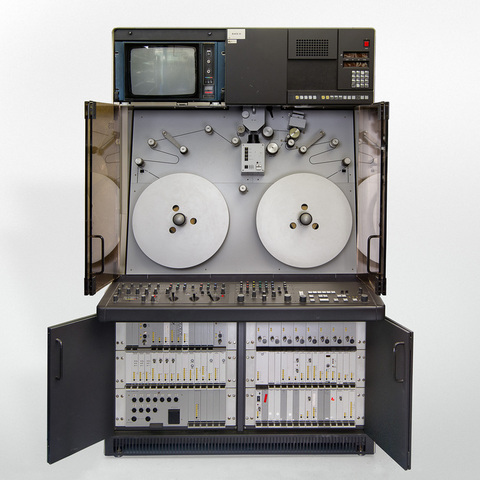Télécinéma
Fiche détaillée
Type de l'appareil
télécinéma à capteur CCD pour film 16 et 35 mm ; deux plateaux ; réglages black, gamma, white, gain, level ; compteur time code ; compteur lampe ; moniteur Thomson CSF
Auteurs
Informations non disponibles
Fabricants
Bosch Fernseh AG
Darmstadt
Utilisateurs
Informations non disponibles
Distributeurs
Bosch Fernseh AG
Darmstadt
Sujet du modèle
Informations non disponibles
Objectif
Informations non disponibles
Taille de l'objet
Ouvert :
Informations non disponibles
Fermé :
Longueur : 84 cm
Largeur : 117 cm
Hauteur : 191 cm
Diamètre :
Informations non disponibles
Taille de la boîte de transport
Informations non disponibles
Remarques
Marques : "BTS FDL 60" (BTS : Broadcast Television System ; FDL : Film Digital Line) ; "Thomson CSF".
Bosch Fernseh serait le premier à avoir introduit le télécinéma à CCD.
"A light source with condenser lens system exposes the film, which is transported continuously at 24 frames/s. Fluctuations in the film density are compensated by an electronic or electromechanical light regulation system. The picture is imaged on the red, green, and blue sensors by means of spectral separation. After amplification to the standard level and correction of the fixed pattern and shading signals, the conventional processing of color signals, e.g., matrixing and gamma correction, can take place. Using a "line updating technique", each frame is scanned once without interlace and stored with its address in a fralestore (one for the luminance and two for the color difference signals) as a complete 525-line frame. All odd lines are read out of the store in the first 1/60s and all even lines of the frame in the followng 1/60 s. Frame line synchronization is obtained by referencing to the sprocket holes. Since every line is located at a specific address in the store, still-picture reproduction, viewable reverse, slow motion, and fast motion with constant picture height can be provided. The standard vertical blanking interval can be easily adapted to the different picture heights of the 16 mm and the 35 mm normal and anamorphic formats by altering the horizontal blanking interval while the active line duration remains constant" (Didier Poetsch, "New methods in film scanning", Bosch Techn. Berichte 6, 1979, p. 89- 98).
Bibliographie
Didier Poetsch, "New methods in film scanning", Bosch Techn. Berichte 6, 1979, p. 89- 98.
